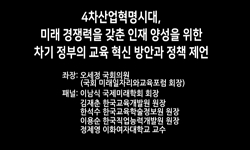The ‘Shrinking’ is a normal stage of cities as same as ‘Growth’. This theory is based on a lot of research. Hoyt (1939) and Hall & Hay (1980)’s theories illustrated that the shrinking of urban areas gives opportunities to the development...
http://chineseinput.net/에서 pinyin(병음)방식으로 중국어를 변환할 수 있습니다.
변환된 중국어를 복사하여 사용하시면 됩니다.
- 中文 을 입력하시려면 zhongwen을 입력하시고 space를누르시면됩니다.
- 北京 을 입력하시려면 beijing을 입력하시고 space를 누르시면 됩니다.
중국 축소도시의 현황 및 지역별 특성에 대한 연구 : 축소도시의 지역별 특성 및 대응방안을 중심으로 = Research on Shrinking Cities' Present Situations and Characteristics by Region in China
한글로보기https://www.riss.kr/link?id=T15339911
- 저자
-
발행사항
서울 : 서울시립대학교 도시과학대학원, 2019
-
학위논문사항
학위논문(석사) -- 서울시립대학교 도시과학대학원 , 도시계획학과 , 2019. 8
-
발행연도
2019
-
작성언어
한국어
- 주제어
-
발행국(도시)
서울
-
형태사항
v, 69 p. ; 26 cm
-
일반주기명
지도교수: 정석
-
UCI식별코드
I804:11035-000000030885
- 소장기관
-
0
상세조회 -
0
다운로드
부가정보
다국어 초록 (Multilingual Abstract)
The ‘Shrinking’ is a normal stage of cities as same as ‘Growth’. This theory is based on a lot of research. Hoyt (1939) and Hall & Hay (1980)’s theories illustrated that the shrinking of urban areas gives opportunities to the development of new spaces. The concept of Shrinking Cities was raised in the mid-20th century by German scholars in a study on population drainage. Since 2000, the theory has been widely recognized. According to a study supported by the German government, the total population of 450 cities with a population over 1 million worldwide has declined by 10%.
China is no exception. After decades of rapid growth, a large number of shrinking cities showed in china. Most planners overlook this reality and ignore it. As a result, there is a risk that the continued infrastructure and property investment in the shrinking cities will eventually become debt in the future to the local government. Identify the current situation of the reduced city and present the seriousness of the problem. Organize data for future cities’ planning. There are considerable differences in development status, economic structure, population composition, cultural background, etc., of each region. And the solutions should be studied in consideration of the characteristics of each region.
Shrinking City Research Network of China (SCRNC) presented a screening criteria for the proposed reduced cities. 653 cities in 31 provinces (excluding Hong Kong and Macao etc.) in mainland China are identified according to standards. 115 shrinking cities in 16 provinces and autonomous regions were identified.
There are four main reasons for the occurrence of the shrinking cities. 1) Shrinking due to resource depletion. 2) The shrinking due to traditional pillar industries’ decline in cities with a single industrial structure. 3) Geographically disadvantaged cities. 4) Shrinking due to neighboring super cities’ Rapid expansion.
The Chinese Reduced City has five general characteristics. 1) Cities with lower administrative levels are at higher risk of shrinking. 2) Cities with small populations are at higher risk of shrinking. 3) Cities with small economies have a higher risk of shrinking. 4) Cities with low per capita income are at higher risk of shrinking. 5) The shrinking of a city is closely related to the urban agglomeration which it belongs.
China has not achieved balanced national development and there are many differences in the level of settlement development, geographical, cultural, etc. in each region. In other words, if we study China as a whole, we can not reflect the characteristics of each region and it is likely that it will not match the actual situation. Therefore, it is necessary to analyze the characteristics of each region in studying the characteristics of China's shrinking cities. The above four factors and the five general characteristics are reflected in a complex way in different regions, resulting in a shrinking city. Therefore, it is necessary to analyze the characteristics of each region and select a countermeasure corresponding to the characteristics of the region.
There are approximately five countermeasures. 1) All shrinking cities should pay attention to the convenience of civic life, and the improvement of the quality of life. Smart shrinking, small but beautiful cities instead of growth planning. 2) Under the perspective of coordinated development of urban agglomerations, coordinate with central cities and surrounding cities through the reform of their own economic structure and administrative systems. 3) For resource-based cities, upgrade their traditional industrial structure, establish new growth engines, and improve their single industrial structure. 4) Repairing environmental damage caused by decades of extensive development and solve the problem of ground subsidence caused by coal mining, restore the natural environment of the mine. 5) Discover regional identity and improve regional image, build culture and tourism infrastructure, and develop tourism.
국문 초록 (Abstract)
도시의 축소는 성장과 마찬가지로 질서를 가진 정상적인 형상이다. 이 이론은 수많은 연구를 기반으로 한다. Hoyt(1939)도시의 발전 주기론, Hall & Hay(1980) 도시지역의 쇠퇴가 새로운 공간의 ...
도시의 축소는 성장과 마찬가지로 질서를 가진 정상적인 형상이다. 이 이론은 수많은 연구를 기반으로 한다. Hoyt(1939)도시의 발전 주기론, Hall & Hay(1980) 도시지역의 쇠퇴가 새로운 공간의 발전에 기회를 준다는 연구가 그 예이다. 축소도시라는 개념은 20세기 중반 독일 학자들이 인구유출에 대한 연구에 처음으로 제기하였고 2000년 이후 공식적인 인정을 얻었다. 독일 정부가 지원한 연구에 따르면 인구수가 100만 명이 넘는 전 세계 450개 도시들의 전체 인구가 10% 감소했다.
중국도 예외가 아니다. 수십 년간 빠른 속도로 성장해 온 중국도시들 가운데는 수많은 축소도시들이 있다. 대부분의 계획자들이 이 현실을 직시하지 못하고 무시하는 경우가 많다. 이로 인해 축소도시들에 지속적으로 확대되는 인프라와 부동산 투자는 결국 부채가 될 위험이 있다. 이 논문에서는 축소도시의 현황을 정확히 파악하고 문제의 심각성을 제시하며 미래의 도시계획에 참고할 자료들을 정리한다. 중국 내 도시들의 발전현황, 경제구조, 인구구성 그리고 문화배경 등은 지역별로 상당한 차이가 있다. 각 지역들 간의 차이를 고려해 지역별 특성 및 축소도시 발생 원인을 연구하고 지역별, 원인별 해결 방안을 제기한다.
중국축소도시연구네트워크(SCRNC)가 제시한 축소도시의 선별 기준으로 검토하여 인구 밀도가 2년 연속 감소하는 기준으로 중국 현행 행정체계에 총 34개 1급 행정구역에서 홍콩, 마카오 등 제외한 31개 행정구역, 즉 중국 본토의 현급 이상의 도시 658개를 대상으로 식별했다. 16개 省와 自治區에서 115개 축소도시를 식별했다.
축소도시의 주요 발생요인 4가지는 다음과 같다. 1) 자원고갈로 인한 축소. 2) 산업구조가 단일한 도시의 우위 전통산업 쇠퇴로 인한 축소. 3) 지리적 불리함에 의한 축소. 4) 인접 도시의 급격한 발전에 따른 인구 유출로 인한 축소.
중국의 축소도시는 5가지 일반적인 특징을 가지고 있다. 1) 도시등급이 낮은 도시일수록 축소할 확률이 높다. 2) 인구규모가 작은 도시일수록 축소할 확률이 높다. 3) 경제규모가 작은 도시일수록 축소할 확률이 높다. 4) 수입수준이 낮은 도시일수록 축소할 확률이 높다. 5) 축소도시의 발생이 도시클러스터의 성격과 깊은 관계가 있다.
중국은 국토의 발전이 균형을 이루지 못하고 각 지역마다 경제 발전의 수준, 지리적, 문화적 차이가 크다. 즉 축소도시 현상에 대해 중국 전체를 대상으로 연구하면 각 지역의 특성을 반영하지 못해 실제 상황과 맞지 않을 가능성이 높다. 그러므로 중국 축소도시의 특성을 연구할 때에는 각 지역별 특성을 분석해야 한다. 위의 4가지 요인과 5가지 기본 특성이 각 지역마다 다르게 복합적으로 반영돼 축소도시가 발생한다. 따라서 각 지역의 특성을 분석해 해당 지역의 특성에 맞는 대응방안을 선택해야 한다.
대응방안은 대략적으로 다음과 같이 5가지로 볼 수 있다. 1) 성장을 위한 도시계획이 아닌 적절한 축소, 시민의 편의와 삶의 질을 고려한 작고 아름다운 도시 계획 방향으로 조정. 2) 도시 클러스터의 관점에서 중심도시 및 주변 기타도시와의 협동과 발전이 가능하도록 경제구조와 행정 시스템 조정 및 도시 인프라 개선. 3) 자원형 도시와 전통 공업도시를 대상으로 산업 수준의 향상과 새로운 성장 엔진 구축 및 단일한 산업구조 개선. 4) 수십 년 간의 성장에 의해 파괴된 자연을 회복하고 광갱, 석탄채굴이 인한 지반 침하 등의 문제 해결 및 녹색성장의 길을 탐색. 5) 지역의 정체성을 재발견하여 문화와 관광 인프라를 구축해 관광산업 육성 및 지역 이미지 개선.
목차 (Table of Contents)
- 제1장 서론
- 제1절 연구의 배경 및 목적
- 1. 연구의 배경
- 2. 연구의 목적
- 제1장 서론
- 제1절 연구의 배경 및 목적
- 1. 연구의 배경
- 2. 연구의 목적
- 제2절 연구의 범위 및 방법
- 1. 연구의 범위
- 2. 연구의 방법
- 제2장 축소도시의 이론 및 선행연구 고찰
- 제1절 국가정책 및 지방정책
- 1. 국가정책 및 호적제도의 동향
- 2. 지방 인구경쟁 정책
- 제2절 학계 연구동향
- 1. 유럽, 미국 및 동아시아국가의 연구
- 2. 중국의 개념 도입 및 연구
- 제3절 연구의 차별성
- 제3장 중국축소도시의 선별
- 제1절 중국의 행정체계, 도시구조 및 데이터 구성
- 1. 중국의 행정체계 및 도시의 분류
- 2. 중국의 도시구조
- 3. 분석용 자료의 출처 및 구성
- 제2절 축소도시의 선별기준 검토
- 제3절 축소도시의 선별
- 제4장 중국 축소도시의 특성
- 제1절 축소도시의 일반적 특성분석
- 1. 도시등급 및 축소의 연관성 분석
- 2. 인구규모 및 축소의 연관성 분석
- 3. 경제규모 및 축소의 연관성 분석
- 4. 수입수준 및 축소의 연관성 분석
- 5. 시티클러스터 및 축소의 연관성 분석
- 6. 소결
- 제2절 축소도시의 지역별 특성분석
- 1. 동부지역의 축소도시 특성 분석
- 2. 중부지역의 축소도시 특성 분석
- 3. 동북지역의 축소도시 특성 분석
- 4. 서부지역의 축소도시 특성 분석
- 5. 소결
- 제3절 지역별 특성을 고려한 축소도시 대책
- 1. 동부지역의 축소도시 대책
- 2. 중부지역의 축소도시 대책
- 3. 동북지역의 축소도시 대책
- 4. 서부지역의 축소도시 대책
- 5. 소결
- 제5장 결론
- 제1절 연구결과 요약
- 제2절 연구의 의의와 한계
- 참고문헌
- 영문초록












